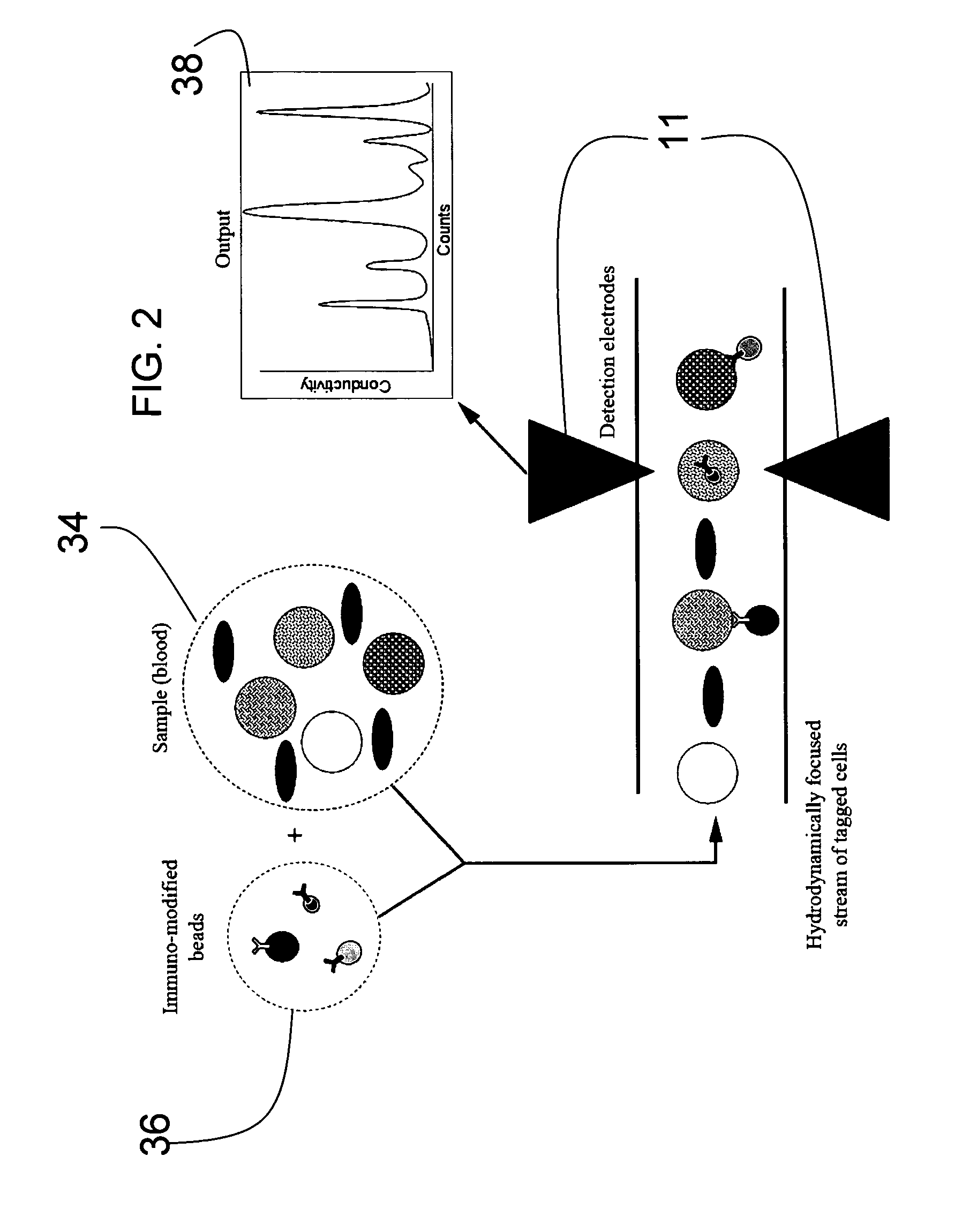3D fluid confined sample stream coulter flow cytometry
a flow cytometry and fluid confined technology, applied in the field of flow cytometry, can solve the problems of complex optical data generation, high cost, and limited cytometry devices, and achieve the effect of reducing the cost of cytometry, and improving the accuracy of flow cytometry
- Summary
- Abstract
- Description
- Claims
- Application Information
AI Technical Summary
Benefits of technology
Problems solved by technology
Method used
Image
Examples
Embodiment Construction
[0018]The invention provides quantitative and / or qualitative flow cytometry in a miniaturized three dimensional hydrodynamically focused micro fluidic device with an elastomer structure that can be readily fabricated by straightforward molding techniques. A sample stream in a device of the invention is confined in both the horizontal and vertical directions, and guided across sensing electrodes disposed transversely on the floor of a wide channel. Sensitivity surpasses two dimensional hydrodynamically confined microfluidic Coulter counters, while all channel dimensions in devices of the invention are substantially greater than the particle diameter. Vertical focusing is accomplished with a two-level design in micro channels, while the shape of the channels readily permits molding in a single cast elastomer piece.
[0019]A microfluidic flow cytometry device of an embodiment of the invention includes a substrate and transverse electrodes formed on the substrate. An elastomer microfluidi...
PUM
| Property | Measurement | Unit |
|---|---|---|
| width | aaaaa | aaaaa |
| conductivity | aaaaa | aaaaa |
| concentration | aaaaa | aaaaa |
Abstract
Description
Claims
Application Information
 Login to View More
Login to View More - R&D
- Intellectual Property
- Life Sciences
- Materials
- Tech Scout
- Unparalleled Data Quality
- Higher Quality Content
- 60% Fewer Hallucinations
Browse by: Latest US Patents, China's latest patents, Technical Efficacy Thesaurus, Application Domain, Technology Topic, Popular Technical Reports.
© 2025 PatSnap. All rights reserved.Legal|Privacy policy|Modern Slavery Act Transparency Statement|Sitemap|About US| Contact US: help@patsnap.com



